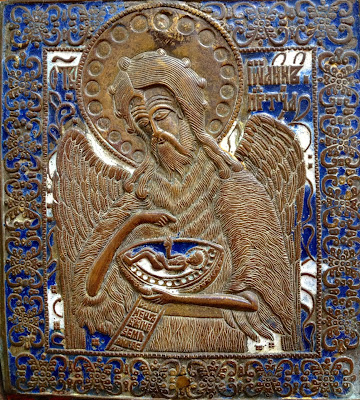... news about Jesus spread throughout Judea and the surrounding country. John’s disciples told him about all these things. Calling two of them, he sent them to the Lord to ask,
“Are you the one who is to come, or should we expect someone else?”
When the men came to Jesus, they said,
“John the Baptist sent us to you to ask, ‘Are you the one who is to come, or should we expect someone else?’”
At that very time Jesus cured many who had diseases, sicknesses and evil spirits, and gave sight to many who were blind. So he replied to the messengers,
“Go back and report to John what you have seen and heard: The blind receive sight, the lame walk, those who have leprosy are cleansed, the deaf hear, the dead are raised, and the good news is proclaimed to the poor. Blessed is anyone who does not stumble on account of me.”
After John’s messengers left, Jesus began to speak to the crowd about John:
“What did you go out into the wilderness to see? A reed swayed by the wind? If not, what did you go out to see? A man dressed in fine clothes? No, those who wear expensive clothes and indulge in luxury are in palaces. But what did you go out to see? A prophet? Yes, I tell you, and more than a prophet. This is the one about whom it is written: ‘I will send my messenger ahead of you, who will prepare your way before you.’ I tell you, among those born of women there is no one greater than John; yet the one who is least in the kingdom of God is greater than he.”
John is recognizable by having shaggy hair and beard, a tired or emaciated face, and he is wearing a hair coat or roughly woven robes. He is usually pointing toward Jesus with his right hand.
John is often shown in a deferential posture, his head slightly inclined towards Jesus. John's message was "I am not the one you are waiting for - I come before Him to prepare the way."In these icons you can see John holding a chalice which contains a small image of Jesus. John is pointing to Jesus as the sacrifice and His blood takes away our sins. In his other hand he is holding the Scriptures about Jesus.
On many painted icons, and this brass icon, John is shown with wings. The Hebrew word for angel also means messenger from God, so John is given wings NOT to show he is an angel, but that he is the messenger who brings notice of God's plans to men so they can be prepared for his coming.
Of course Jesus, Mary and John appear on more complex icons that feature a number of people. Those will be discussed in later posts. In the meantime, here is an icon of John Baptizing Jesus in the Jordan. This event is called the Baptism, the Epiphany or Theophany. I define and discuss the terms later.
Angels stand in attendance for Jesus. God is speaking, saying "This is my Son, whom I love, and with Him I am well pleased" and the Holy Spirit is descending in the form of a dove. An axe is present in the tree behind and below John, prefiguring the means of his death. The sky is brilliant gold, implying that God is not in the air overhead, but in the heavens far above.


















